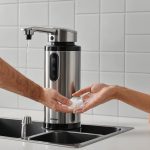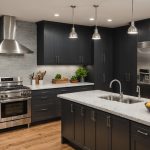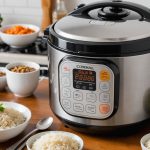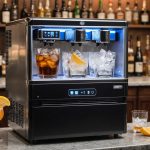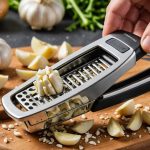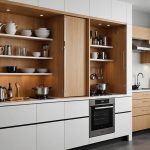Choosing effective kitchen wall insulation ensures year-round comfort while significantly reducing your cooking frequency. Proper insulation prevents heat loss and maintains a stable temperature, making your kitchen not only cozier but also more energy-efficient. It’s an investment that pays off by creating a pleasant cooking environment and lowering energy bills. Explore your options and transform your kitchen into a space that inspires creativity and joyous cooking without the constant need for reheating.
Understanding Kitchen Wall Insulation
Exploring the essentials of kitchen wall insulation and its impact on your home.
Topic to read : Discover the Most Precise Digital Nutrition Scale for Accurate Macronutrient Tracking in Your Slimming Kitchen!
Importance of Kitchen Wall Insulation
Kitchen wall insulation plays a crucial role in maintaining thermal efficiency and enhancing overall comfort. By reducing heat loss, it ensures that your kitchen remains warm during colder months and cool during summer. This not only contributes to a more comfortable cooking environment but also helps in reducing energy bills. Thermal efficiency is achieved by minimizing the energy required to maintain desired temperatures, thus promoting sustainable living.
Effects on Thermal Efficiency and Comfort
Proper insulation enhances the thermal efficiency of your home, leading to significant energy savings. It acts as a barrier to heat flow, keeping your kitchen cozy and inviting. The comfort enhancement gained from well-insulated walls is evident in the consistent temperature and reduced noise levels.
This might interest you : Choosing the Ideal Automatic Soap Dispenser for a Hygienic Kitchen: Your Ultimate Guide
Common Misconceptions
There are several misconceptions about kitchen wall insulation. Some believe it is unnecessary, while others think it only serves to keep out the cold. In reality, insulation is vital for both heat retention and energy efficiency.
Key Benefits of Kitchen Wall Insulation:
- Improved thermal efficiency
- Enhanced comfort
- Lower energy bills
- Noise reduction
By understanding these aspects, homeowners can make informed decisions about their kitchen insulation needs.
Types of Kitchen Wall Insulation
Understanding the distinct types of insulation materials is crucial for achieving optimal energy efficiency in your kitchen. Each material offers unique benefits tailored to specific needs.
Fiberglass Insulation
Fiberglass is a widely-used insulation type due to its affordability and ease of installation. It's composed of fine glass fibers that trap air, providing thermal resistance. While its R-value is lower compared to other materials, it remains a budget-friendly option for many homeowners. It’s essential to pair fiberglass with a vapor barrier to enhance its moisture management capabilities in kitchen environments.
Foam Board Insulation
Foam board offers high thermal resistance due to its dense structure. It’s an excellent choice for kitchens where space is limited, as its rigid panels require less thickness to achieve desired insulation levels. Foam board's ability to resist moisture makes it suitable for humid areas, ensuring long-term durability. Its R-value surpasses that of fiberglass, making it a more energy-efficient option.
Spray Foam Insulation
Spray foam stands out for its superior air sealing properties. It expands upon application, filling gaps and minimizing air leakage. This type of insulation excels in moisture resistance, making it ideal for kitchens prone to humidity. Although more expensive, its high R-value and comprehensive coverage offer excellent energy efficiency.
- Fiberglass: Budget-friendly, easy installation
- Foam Board: High R-value, moisture-resistant
- Spray Foam: Superior sealing, ideal for humid areas
Benefits of Proper Insulation in the Kitchen
Exploring how insulation transforms kitchen efficiency and comfort.
Reducing Energy Costs
Insulation in the kitchen is a game-changer for reducing energy costs. By minimizing heat transfer, it ensures that your kitchen maintains its temperature, reducing the need for constant heating or cooling. This efficiency translates into significant savings on your energy bills over time. A well-insulated kitchen can lead to a noticeable decrease in energy consumption, making it a cost-effective investment.
Impact on Cooking Frequency and Temperature
Proper insulation impacts how frequently you cook by maintaining a stable kitchen temperature. A comfortable kitchen environment encourages more frequent cooking, as it remains pleasant regardless of the season. Insulation prevents excessive heat loss or gain, allowing you to enjoy cooking without discomfort. This stable environment can also contribute to healthier cooking habits, as you're more likely to prepare meals at home.
Enhanced Comfort and Potential Health Benefits
Beyond financial savings, insulation enhances overall comfort by reducing drafts and maintaining a consistent indoor climate. This stability can have potential health benefits, such as reducing the risk of colds and improving air quality. A well-insulated kitchen creates a more enjoyable and healthier space for cooking and gathering.
- Energy Savings: Lower utility bills
- Cooking Comfort: Encourages more frequent use
- Health Benefits: Improved air quality and temperature stability
Safety Considerations During Kitchen Wall Insulation
Ensuring a safe and effective insulation installation process.
Personal Protective Equipment
During insulation installation, safety is paramount. Always wear appropriate personal protective equipment (PPE) such as gloves, goggles, and masks to protect against dust and irritants. This is crucial whether you're undertaking a DIY project or supervising a professional installation. Proper PPE reduces the risk of respiratory issues and skin irritation.
Handling Insulation Materials
When handling insulation materials, it's important to follow specific safety protocols. Fiberglass can cause irritation, so avoid direct contact with skin. Foam board and spray foam require careful handling due to chemical components. Ensure the workspace is well-ventilated to disperse fumes during installation.
Electrical and Structural Safety
Before beginning insulation installation, identify and mark all electrical outlets and wiring. This prevents accidental damage and ensures a safe working environment. Structural safety is also critical; ensure that the walls can support the insulation type you choose. Consult professionals if you're unsure about the structural integrity.
- Personal Protective Equipment: Gloves, goggles, masks
- Material Handling: Avoid skin contact, ensure ventilation
- Electrical Safety: Identify outlets, avoid damage
By adhering to these safety considerations, you ensure a secure and efficient insulation installation process, protecting both your health and your home.
Cost Considerations and Energy-Saving Insights
Examining the financial and energy efficiency aspects of kitchen insulation.
Initial Investment vs. Long-term Savings
Investing in kitchen insulation involves understanding both initial costs and potential energy savings. While fiberglass is cost-effective initially, priced between $0.40 and $1.50 per square foot, its long-term energy efficiency may not match that of foam board or spray foam. These options, though pricier upfront, often yield greater energy savings over time. The return on investment (ROI) can be significant, as reduced heating and cooling expenses offset higher initial insulation costs.
Budget-friendly Insulation Options
For those prioritizing budget-friendly solutions, fiberglass remains a viable choice. Despite its lower energy efficiency, it offers immediate cost savings. However, evaluating the energy savings of more efficient materials can highlight potential long-term benefits. The table below outlines insulation costs for various materials:
| Material | Cost per sq ft |
|---|---|
| Fiberglass | $0.40 – $1.50 |
| Foam Board | $1.50 – $3.00 |
| Spray Foam | $3.00 – $6.00 |
Incentives for Energy-efficient Upgrades
Government and utility incentives can further enhance the ROI of energy-efficient insulation projects. These incentives often cover a portion of the insulation costs, encouraging homeowners to opt for more efficient solutions. Exploring these options can make high-performance insulation more accessible and financially attractive.




